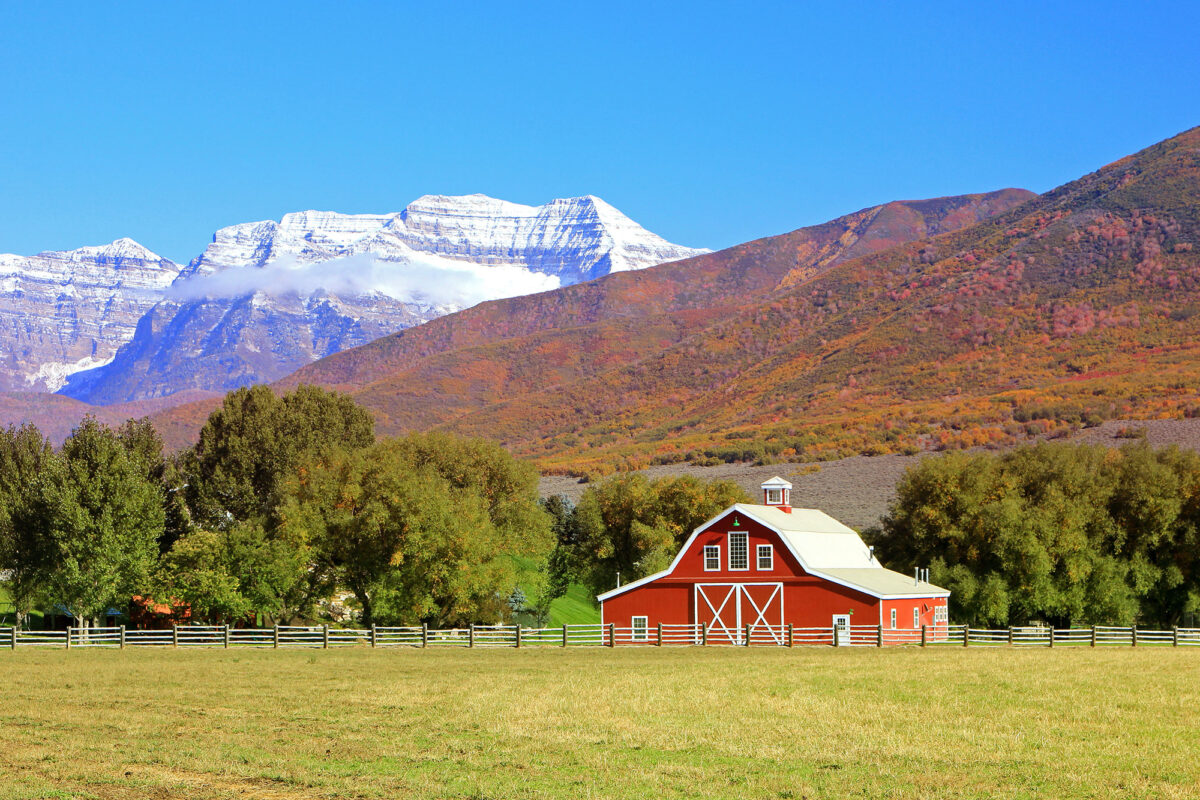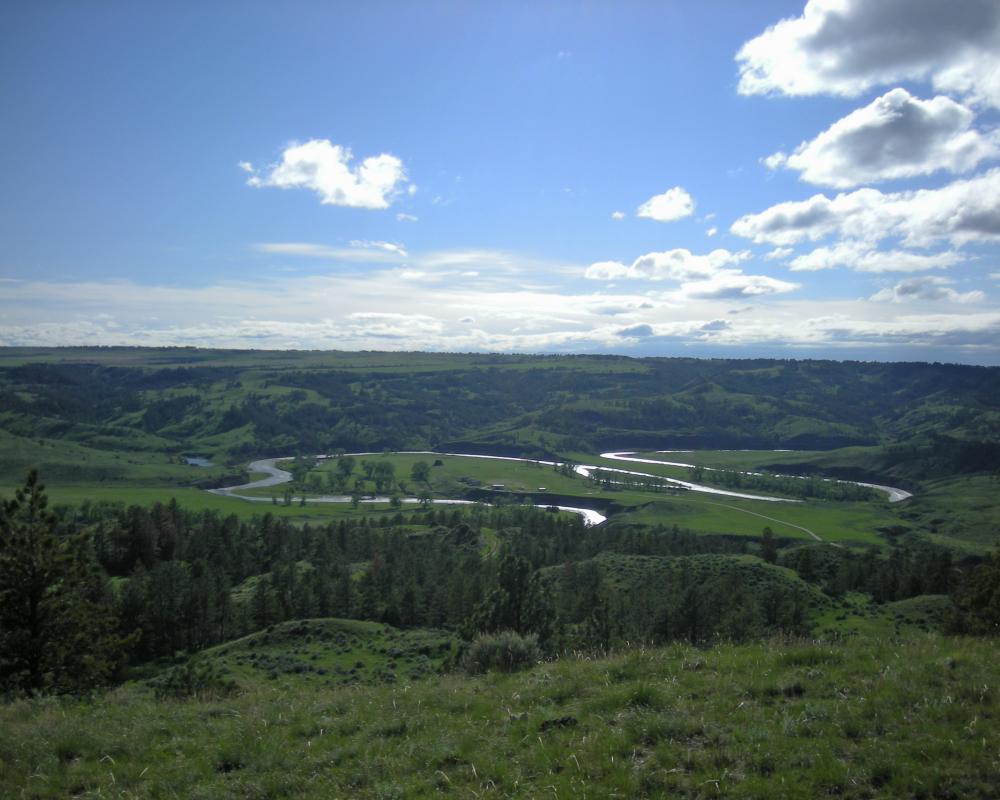Steps for Creating a Successful Ranch Management Plan

The relationship between ranchland and its landowner is one of America’s oldest love stories, complete with romance, reward, heartache, hard work and unending commitment to living a life on the land. Ranch ownership offers plenty of allure, but before you purchase your own ranch property, it’s imperative to create a comprehensive ranch management plan to ensure healthy land, profitable seasons and longevity.
Follow these Ten Steps for a Holistic Approach to Properly Managing Your Ranch.
1. Establish the “Big Picture” or Mission Statement for Your Ranch
Start by specifically defining the Ranch’s land use and general purpose. Do you dream of raising commercial cattle? Or is your ranch intended for your family’s sustainable living only, offering a collective means of living off the land?
Before you purchase your dream ranch property, it’s important to clarify what you want to do with it. This guiding philosophy provides a road (or trail) map for ranch operations, management, marketing, upkeep and profitability.
2. Qualify Your Key Resources
These can be the land itself. From pastures to quality soil and natural water sources – your livestock and other animals, and the people who manage the property.
It’s important to understand the unique aspects of your ranch and enhance them over time with special attention paid to natural resource management, proper equipment maintenance and providing a fun, engaging work environment for ranch managers.
3. Create a Management and Business Plan
Treating your ranch like a business is important to its long-term viability & sustainability.
Determine your goals and objectives. Establish key performance indicators you can track from season to season. Then revisit the plan frequently throughout the year.
4. Develop a Pasture Management Plan
Understand your soils, water sources, forages and potential for erosion to ensure your pastures remain productive and your cattle are happy.
5. And a Cattle Management Plan
Ranches are most productive when every element of them work in harmony – and this is certainly the case with cattle and the land.
Things to consider are which types of cows are best for your land, how you will keep them healthy and well nourished, and how they’ve been bred or if you will breed them.
6. Make Sure Your Bookkeeping is Organized and Up-to-date
Toss the shoebox full of old receipts and invest in proper bookkeeping software. You’ll want to keep track of revenue streams, spending, employee wages, invoicing and profits and losses. Being diligent about your bookkeeping throughout the year is an important way to ensure you’re working toward your ranch’s mission statement and it will save you time, energy and headaches come tax season. It’s also worth noting that profitable ranches are much more likely to be passed down from one generation to the next, ensuring their legacy in your family’s history.
7. Consider If and How You Want to Market Your Ranch
Is it family-owned and operated? Do you focus on raising organic cattle or does your ranch support speciality breeds? Establishing your ranch’s unique aspects and competitive advantages is elemental to a successful marketing plan. From there, consider how you want to communicate that message. These days, effective marketing can range from sponsorship opportunities at your local livestock auction to highly targeted social media advertising.
8. Keep Personnel Management in Mind
Happy employees stick around. It’s important to create a fun and inviting work environment for your ranch management team.
9. Continue to Observe and Adjust Accordingly
Ultimately, ranches are complex living entities at the cross-section of humans, animals and nature. It’s important to learn your ranch inside and out. Continually look for ways to improve soil and water sources. Stay up-to-date on emerging ranch and farm technologies and equipment. Tap into local scientists and land managers to better understand the environment around you. Then apply your learnings to your ranch management plan.
10. Enjoy the Process!
Owning your own ranch can be a dream realized. It offers an incredible amount of freedom and responsibility, independence and teamwork and an undeniable connection to the land.
The ranch property experts at Hayden Outdoors are an excellent resource in helping you find a ranch that meets your needs and aligns with your ranch management goals.
Land Stewardship on Multifaceted Western Riparian Properties

Authors: Duncan Clark & Brent Hedrick
An interesting trend that has grown in relevance and popularity in the present age of ranch ownership is the relationship between agricultural land use and recreational sporting opportunities and how to successfully maximize both attributes. A good example of this relationship are ranches characterized as riparian zones with a combination of quality operating features and live water capable of supporting a viable sport fishery. Many ranchers across the country have begun to realize the lucrative nature of balancing agricultural operations while also concentrating on improving wildlife habitat to maximize hunting resources and create a quality recreational fishery. While every riverine property is different there are a few simple practices that we have helped landowners with to maximize the overall value and utility of these multifaceted ranches.
Managing Riparian Habitat
Historical agricultural practices on many live-water alpine valley ranches have been a detriment to riparian habitats degrading the natural balance of native plant and animal species along these important ecological zones. Most agricultural practices on these properties have been to maximize space for haying and grazing operations which more often than not degrades streambanks and prohibits growth of native woody vegetation important to wildlife which both can severely degrade crucial riverine habitat. To protect these fragile ecological zones, we believe it is extremely important to restore buffer strips along the water’s edge which can be anywhere from 25-100 yards in width on both sides of the water’s edge. One good practice of this would be fencing off the river corridor with barbed/ and or hotwire from livestock with strategic placement of river access gates extending into natural riffles in the river/stream for stock water. The riparian corridor benefits immensely from using this practice and results like new vegetation growth and better bank stabilization can be seen quickly perhaps in as little as a year or two. Every property and streambed are different and could use a strategic plan to restore its productivity but with the right management approach and practice a ranch becomes multifaceted and therefore more valuable.
Land Specialist specializing in Land Stewardship
Having a strong base of knowledge and experience regarding wildlife, fisheries, and agricultural management; Hayden Outdoors Land Specialists Duncan Clark and Brent Hedrick are uniquely qualified to valuate and market western ranching operations. We believe that each property with balanced management of agricultural and recreational attributes maximizes the financial viability of the property and is thus more marketable. We have years of experience in brokering multiproductive ranches across the state of Colorado while collaboratively helping landowners maximize the agricultural and recreational potential of their property. If you have any questions regarding improvement of riparian habitat on your ranch feel free to reach out to Duncan Clark or Brent Hedrick, they would be glad to speak with you.


Duncan Clark & Brent Hedrick
Summer Time Land Management

By Allen Treadwell
Land Management Tactics for a Successful Hunting Season Come Fall
With Turkey season ending, summer time heat and humidity just around the corner in much of the Midwest. Many of us are already looking forward to those cool crisp mornings of early fall, watching the sun appear over the horizon while our breath is visible as we exhale, and waiting on a whitetail deer to appear from behind the thicket.
With our thoughts of those priceless fall mornings on our mind, often times is easy to get busy with summer time activities and put off improving our land for hunting until the last minute. When in all reality, now is some of the best times to put a bit of sweat equity into our properties to greatly improve our experiences this fall. It’s the perfect time to put in some work on our food plots. Whether we are turning over the soil, expanding an already existing one, or clearing off and area for that hidey-hole food plot that you know will produce.

Timing is Everything for Proper Land Management
Summer is the perfect time to complete these projects. The days are longer, and it becomes easier to spend a few hours on an evening working in the field. Those wise ‘ol bucks are far less spooky when they have so much vegetation to hide behind and help cover up the noise from any equipment.
The farther removed from hunting season, the longer the animals have to find, and get use to the new improvements. It is also a great time to think about stand locations. When it comes to hanging a new set, there is no better time, you are far enough removed from hunting season that any noise and scent left behind will not affect the way deer behave come fall.

Routine Hygiene for Hunting Blinds & Stands
It also makes sense to check those existing stands for safety and stability. You can replace ratchet straps from the previous year, make adjustments if the stand needs to be tweaked and trim shooting lanes, especially if it’s a place you know you will hunt early season with leaves and vegetation still on the trees.
So, before those summer no hunting season blues set in, use these days to promote success, habitat management and comfort for long days in the field when the sun starts sitting earlier and the buck of your dreams could step out any minute.











